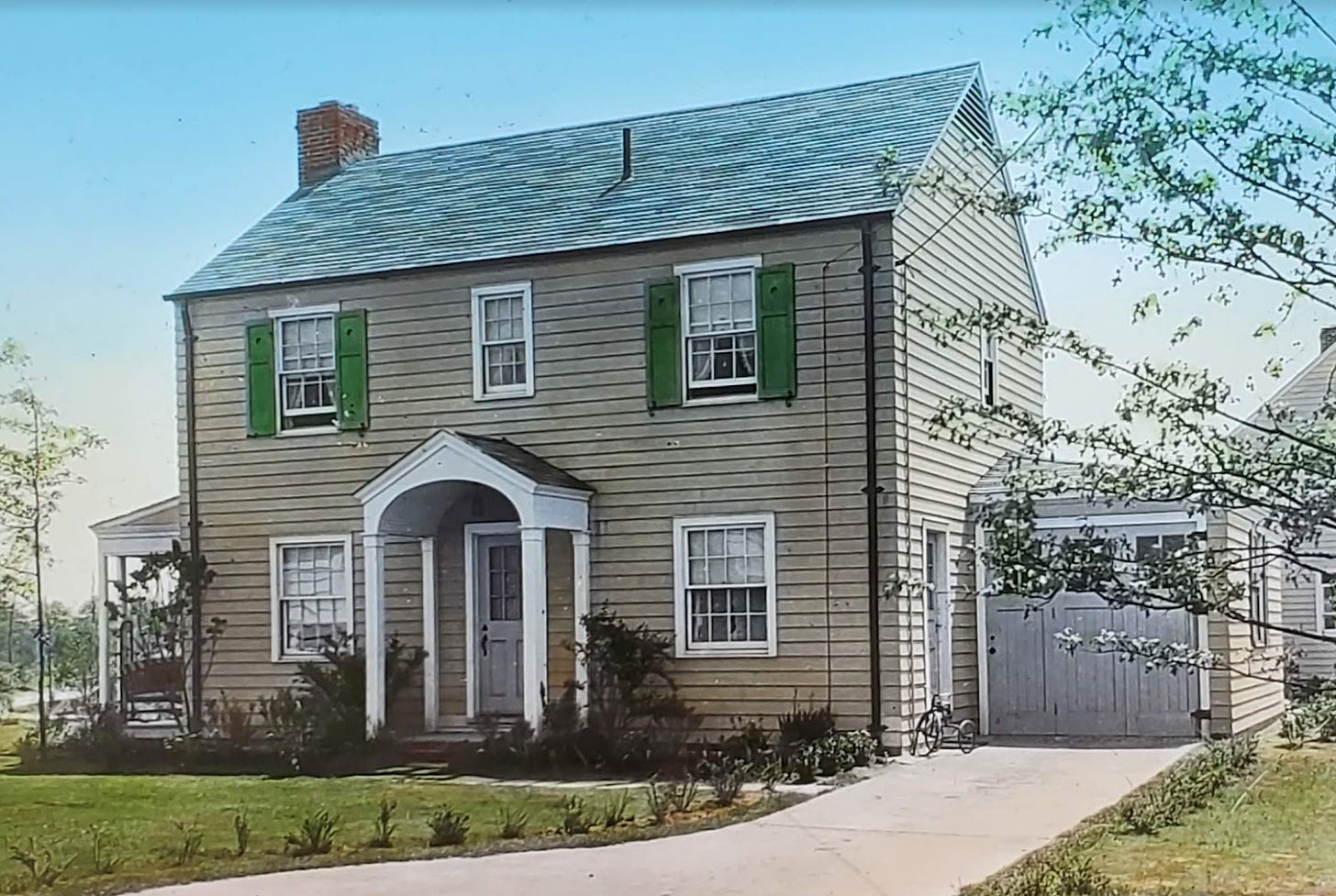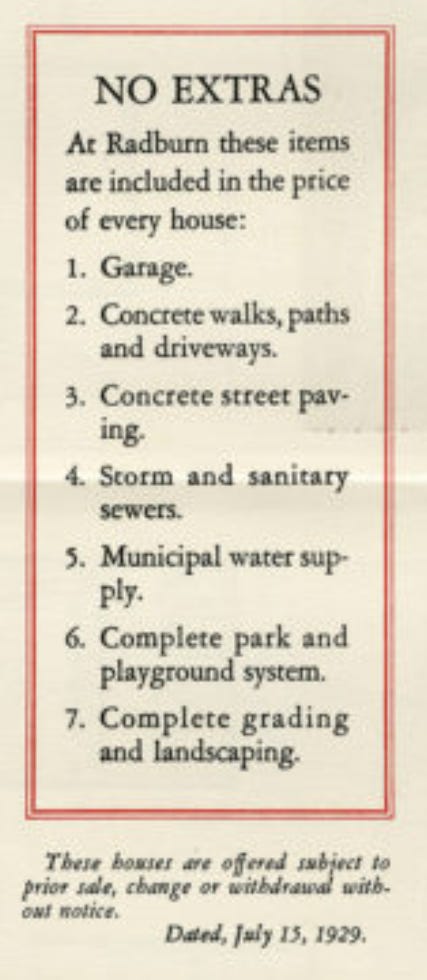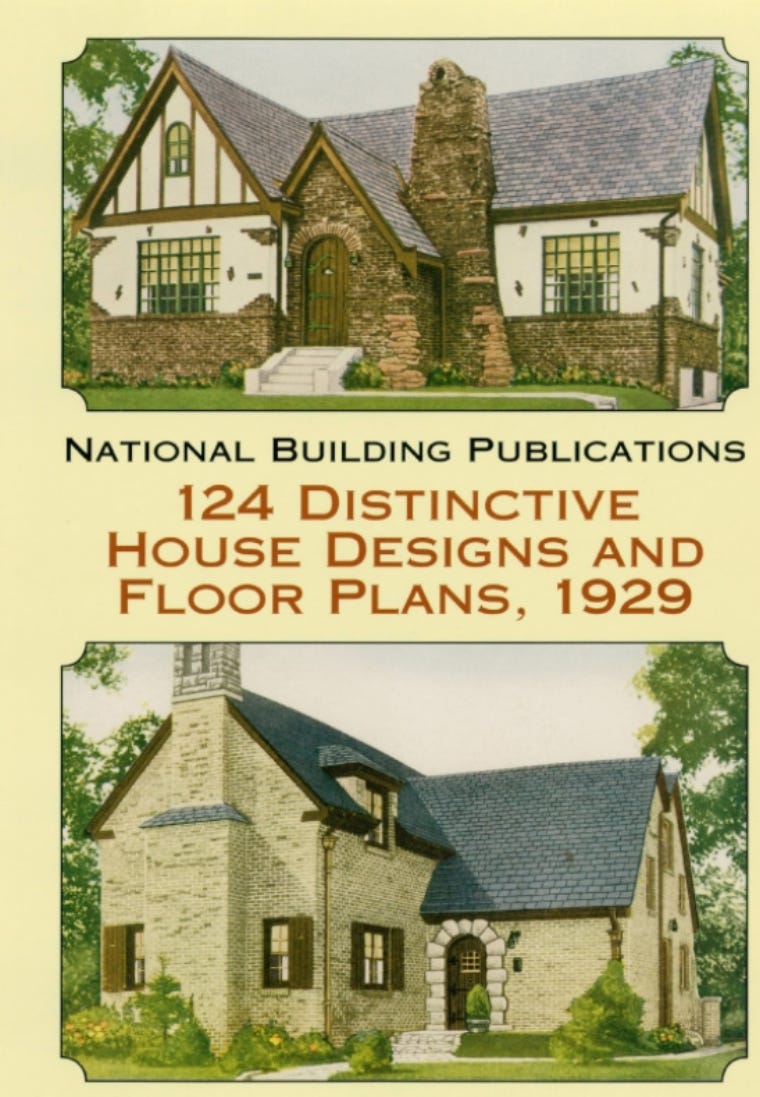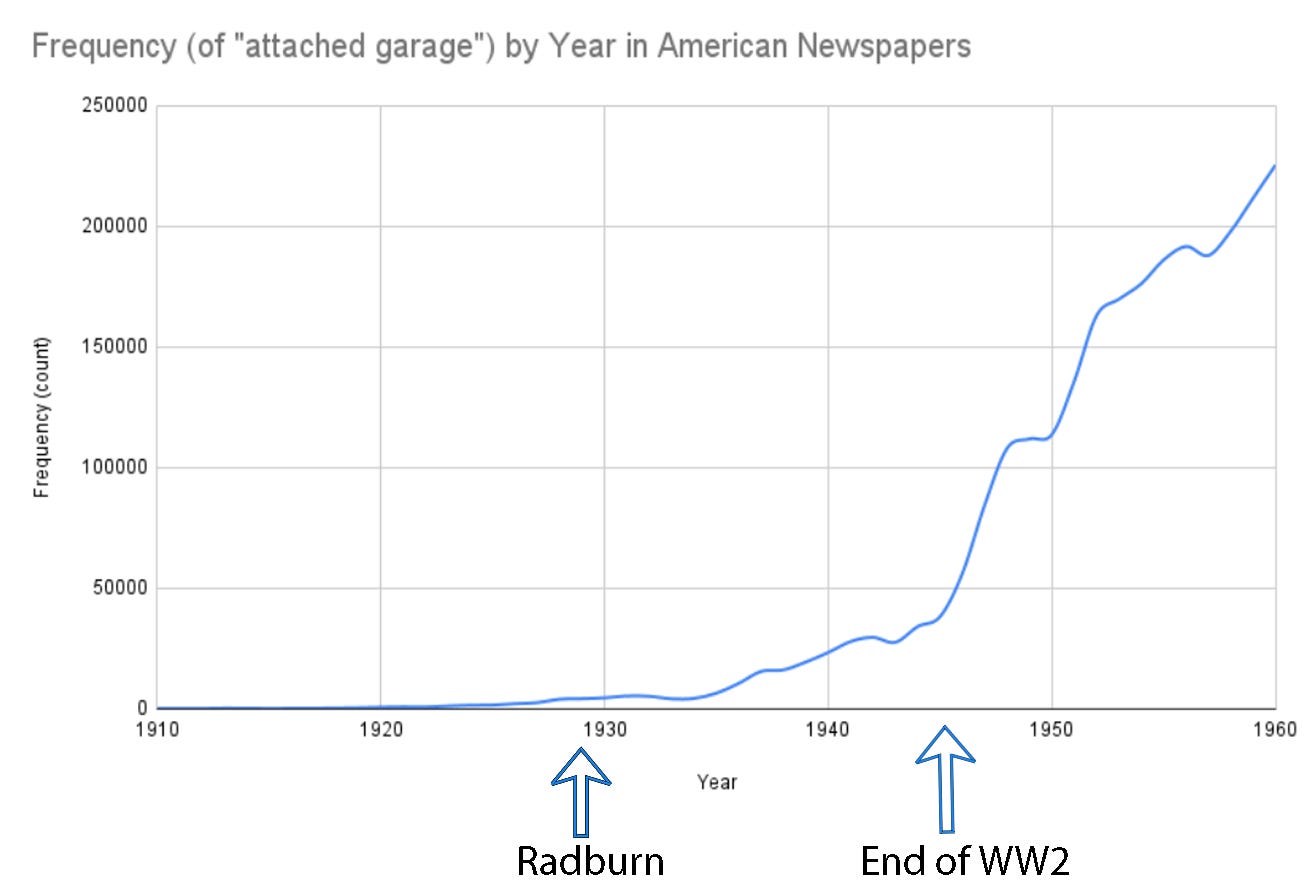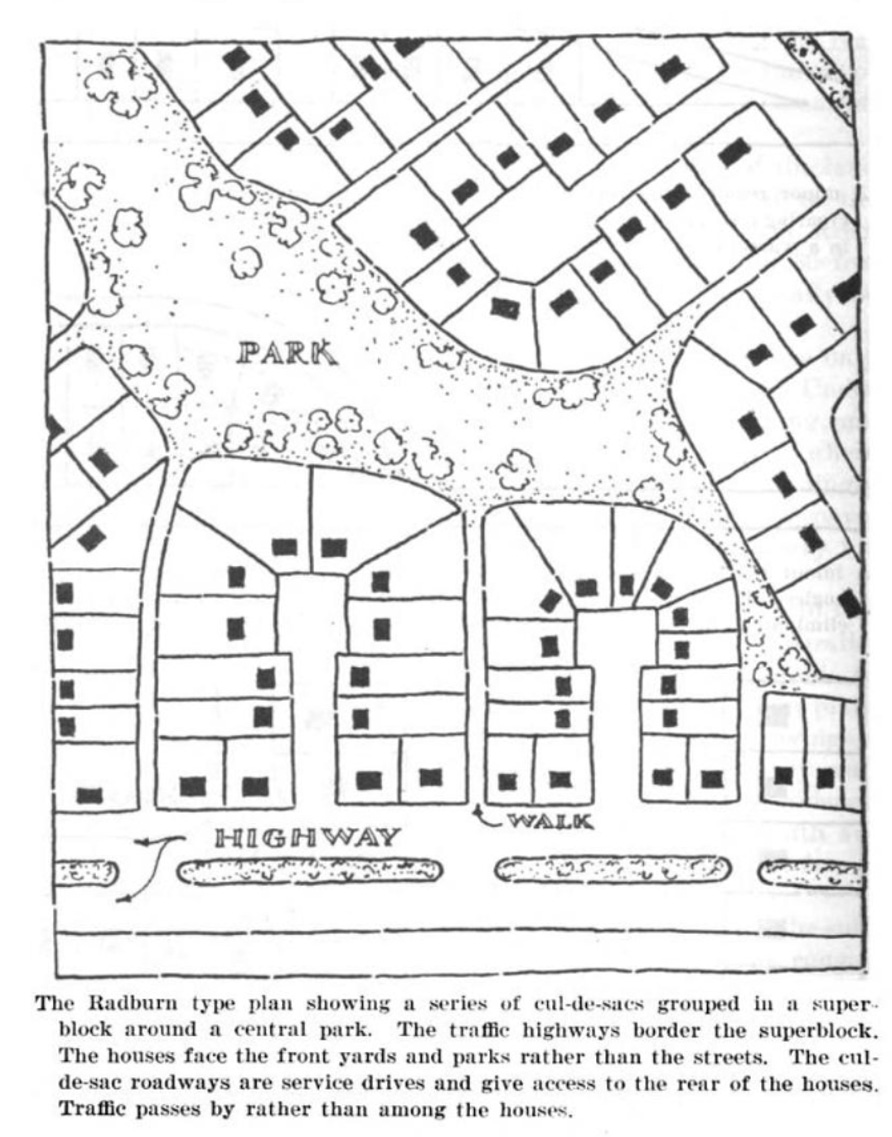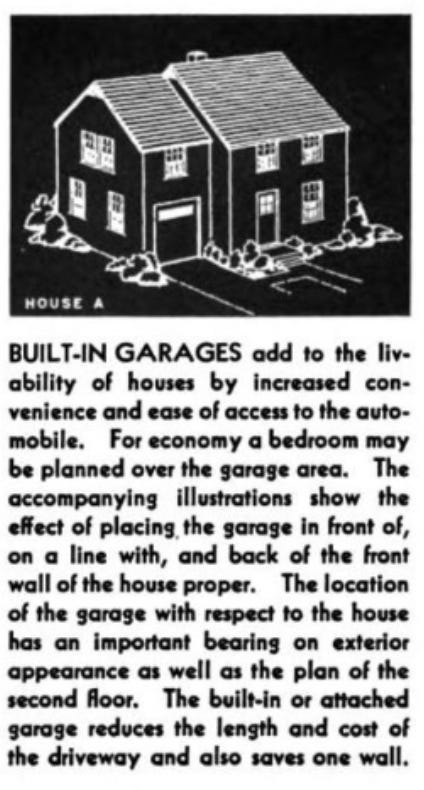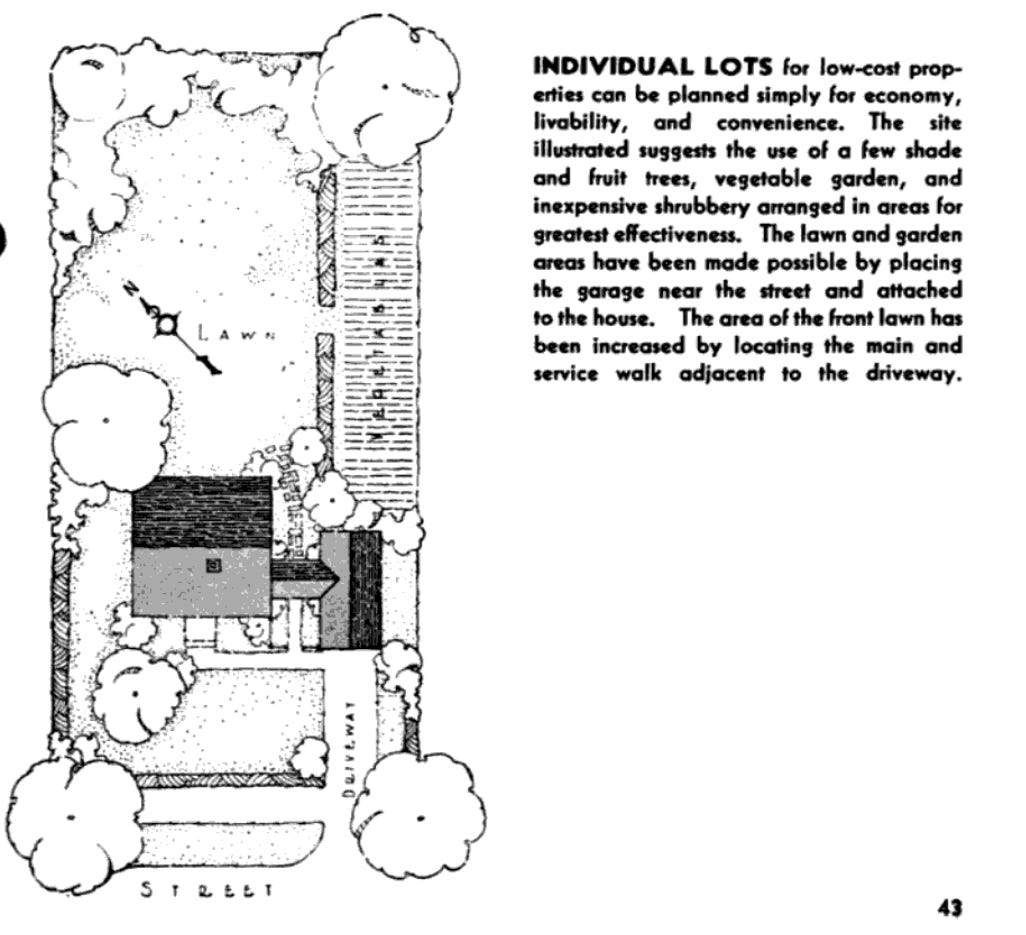The attached garage: From Radburn to Silicon Valley
Motor Age town changed where cars were sheltered
The planned community of Radburn, New Jersey, is celebrated for its groundbreaking innovations in suburban design: tranquil cul-de-sacs organized into "superblocks," parks with pedestrian-only paths, and houses turned to face gardens instead of streets.
But Radburn also played an unsung role in the introduction of a transformative element of the American landscape: the attached garage.
In the early 20th century, as cars transitioned from a luxury to a middle-class necessity, the question of where to store these newfangled machines became increasingly pressing. Street parking and detached garages – the latter relegated to backyards or alleys – were the norm.
The architects who designed and sited Radburn’s houses in the late 1920s and early 1930s had a different idea. Clarence Stein, Henry Wright, and Frederick Ackerman imagined the car as an integral part of the modern home.
These Radburn planners didn't invent the attached garage. They did something possibly more important: they made it standard. In a bold departure from suburban development in the 1920s, nearly every Radburn home featured an attached garage. This seemingly simple decision had profound implications, transforming the garage from a utilitarian outbuilding into a seamless extension of the home.
The attached garage offered unparalleled convenience, allowing many residents to step directly from their cars into their living rooms or kitchens. It also eliminated the need to park on the street or to trudge through the elements to or from a detached garage. And Marjorie Sewell Cautley, the landscape architect of Radburn, argued that attached garages removed an obstacle to a well landscaped yard: Long driveways and ugly outbuildings no longer took up valuable garden space.
Radburn's attached garages were more than just practical; they were a symbol of the changing times, a recognition that the car was not just a mode of transportation but a central part of the new suburban lifestyle.
Attached garages featured in a Radburn promotion film (Marjorie Sewell Cautley, c1933). For the full film, see the historic film tab of this substack.
The rise of the attached garage
In a celebrated history of the garage, J.B. Jackson wrote the following in 1976:
Many well-intentioned designs for moderately priced houses were published during the twenties and not a few of them received awards; but although a number of them included maids’ rooms, scarcely one of them thought of the garage or even of overnight parking space. Radburn, in New Jersey, designed in 1928, gives perhaps the first sign we have of awareness of the garage as an essential adjunct to the dwelling …
Figure 1 attempts to quantify Jackson’s claim. It documents the prevalence of attached garages in published housing plans and competition-winning designs from 1928, when Radburn was planned. Also, data from the year of Radburn’s building in 1929 to just after the war in 1946 are presented to get a measure of the spread of the attached garage.
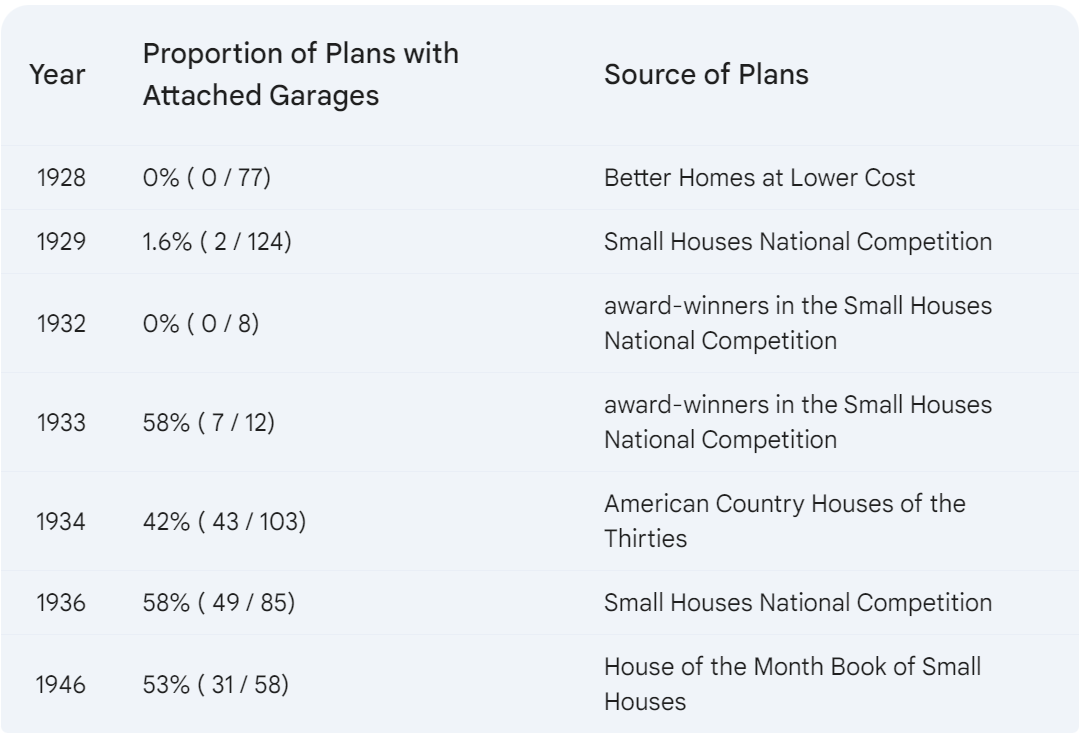
The next graph, Figure 2, attempts to quantify the spread of attached garages by using counts of the words “attached garage” from American newspapers (as archived by Newspapers.com). Many of these counts are from the real estate and classified sections.
The results of these two very different analyses show that when the first Radburn homes were occupied in 1929, attached garages were the exception, not the rule. Even award-winning house plans did not have them. But starting in the early 1930s the attached garage was suddenly prevalent in housing plans and competitions across the country (Figure 1). And there was a gradual increase in the frequency of the phrase “attached garages” in real estate and classified sections of newspapers (Figure 2).
Figure 2 also shows another pattern: The number of attached garages increased dramatically after World War II and continued to rise until the 1960s.
The spread of Radburn’s motor-age experiments was stymied by the twin calamities of the Great Depression and the war, which brought suburban expansion to a halt. It was not until the postwar housing boom that the attached garage truly came into its own. And it got a big boost from the federal government.
The effect of the FHA
The Federal Housing Administration (FHA), the gatekeeper of federally insured mortgages, was started in 1934. In 1936, the agency’s guidebooks began promoting Radburn-style cul-de-sacs (they featured a diagram of part of Radburn’s B block) and attached garages. Detached garages, with their long driveways, were about as compatible with Radburn's tight cul-de-sacs as a square peg is with a round hole.
By 1940, the FHA was pushing a new blueprint: a two-story home with the garage tucked neatly inside and a bedroom perched right on top. This design was very similar to some Radburn houses from 1929 (see figures). The FHA also touted the landscaping perks of attached garages, indirectly echoing Marjorie Sewell Cautley (See figures).
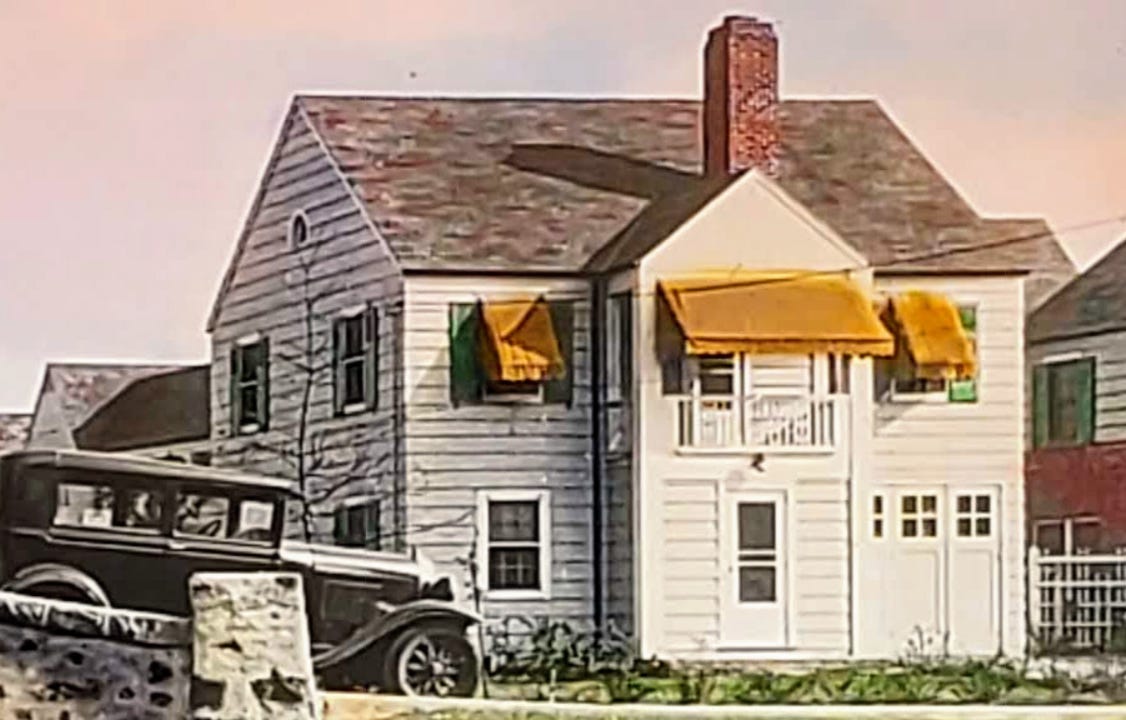
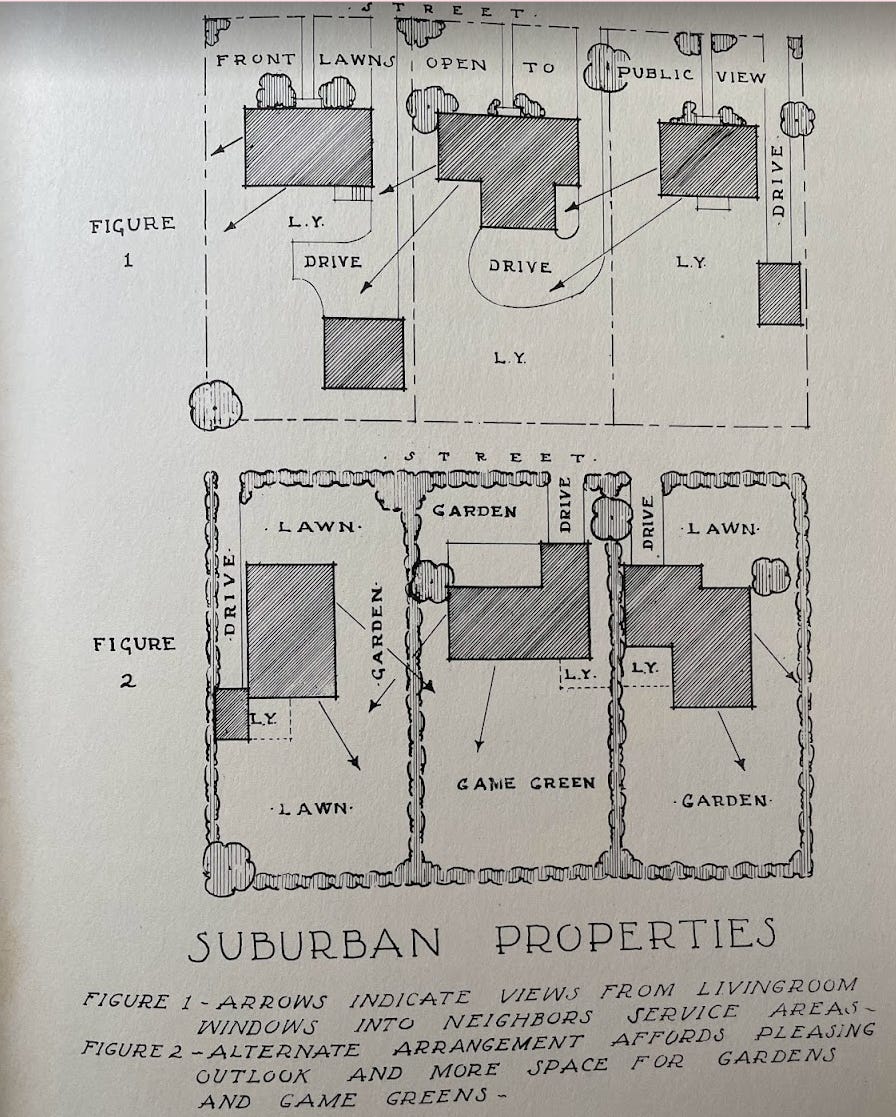
Radburn’s influence
So, what exactly was Radburn’s role in the rise of the attached garage? “The Town for the Motor Age,’’ as it styled itself, might not have single-handedly caused the revolution. It was, however, a laboratory of suburban innovation where architects and planners experimented with new ideas, and their experiments were widely promoted in newspapers and magazines. And it’s clear that Radburn, with the help of the FHA, was something of a time capsule for these ideas during the Depression and the war.
The attached garage was one Radburn innovation that turned out to be a game-changer. It became a home not only for cars, but also for countless rock bands, rummage sales – and start-ups that became Apple, Microsoft and Google.



